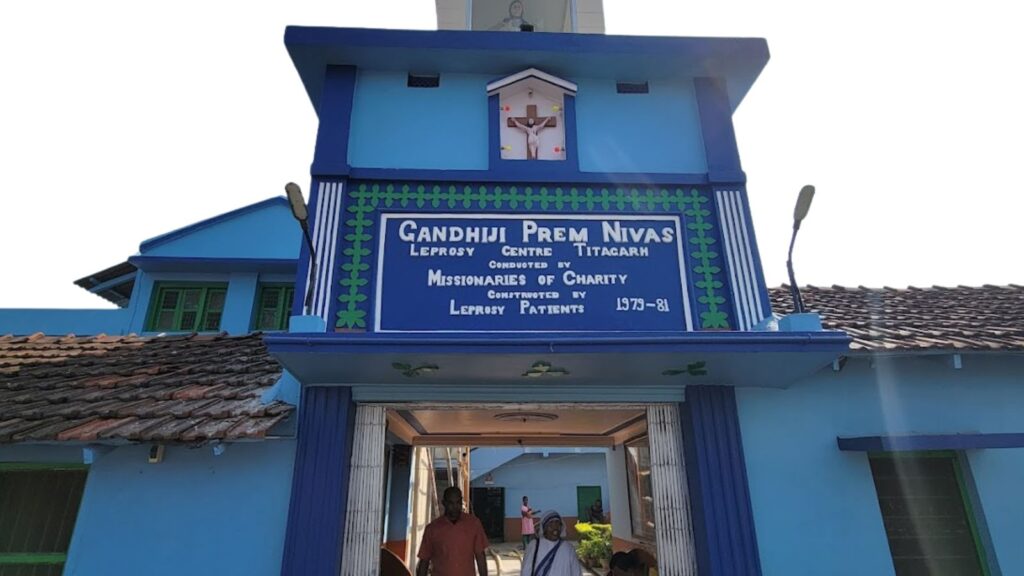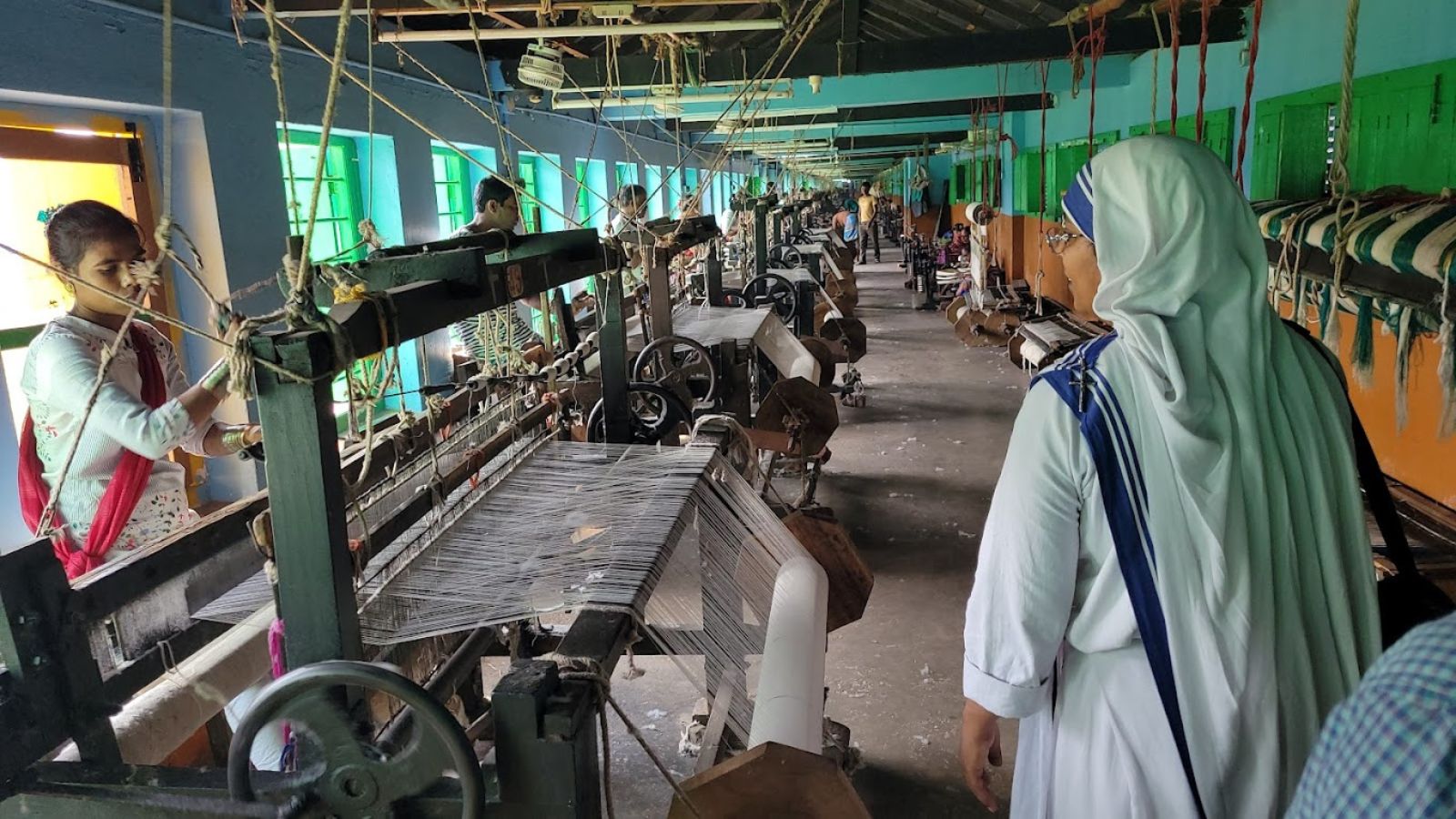The striking white cotton saree with blue border stripes, worn by the sisters of the Missionaries of Charity, is more than just an outfit—it’s a symbol of dignity and compassion. Mother Teresa used to wear these. Today, it remains the attire of her followers. What makes these sarees unique is not just the person who wears it, but the people who make it.
These sarees are woven by lepers at Gandhiji Prem Nivas in Titagarh, about 20 kilometers from Kolkata. Established by Mother Teresa in 1958, the Center is run by the Missionaries of Charity, offering villagers, who have been shunned by society, a chance to regain their dignity through meaningful work. The Center produces over 4,000 sarees every year. The sarees are shipped to sisters in over 130 countries. One can not buy this saree anywhere in the commercial market, no matter how much one is willing to pay.

Gandhi Prem Nivas, Titagarh
Though simple in appearance, the saree holds deep significance. The white symbolizes purity, while the blue stripes represent the Virgin Mary, reflecting the sisters’ vows of living with modest means, chastity, and obedience. Mother Teresa wore this humble garment until her passing, making it an integral part of her identity.
To protect its sanctity, the saree has been trademarked by the Missionaries of Charity, preventing misuse for commercial purposes. For those who wear it, the saree signifies a life devoted to service. For those who create it, it opens up a pathway out of poverty to a dignified living.



